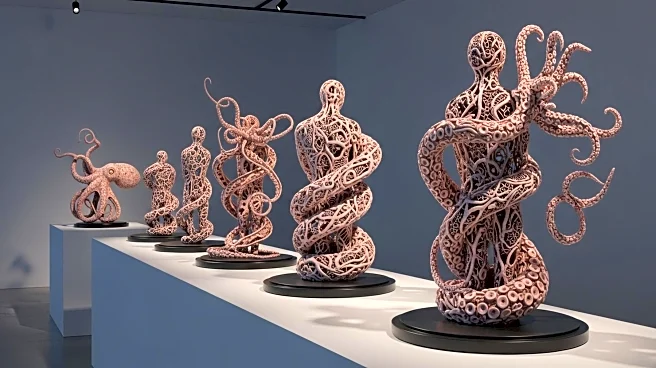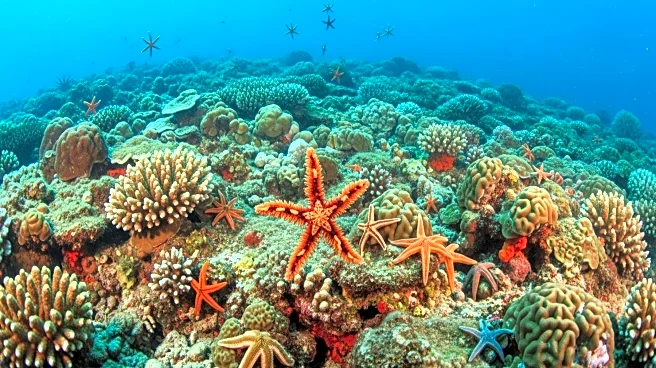What is the story about?
What's Happening?
Miriam Simun, an artist known for her innovative approach to art, recently showcased her work at the Recess art space in Brooklyn. Her exhibition, titled 'Institute for Transhumanist Cephalopod Evolution,' delves into the concept of learning from octopuses and other cephalopods. The exhibition features workshops called 'How to Become an Octopus (and sometime squid),' where participants engage in psycho-physical exercises developed by Simun. These exercises are the result of collaborations with marine biologists, engineers, dancers, and synchronized swimmers. The workshops aim to expand participants' understanding of non-human thought and encourage a shift in the human relationship with the natural world. Simun's work is part of a broader trend among artists who explore non-human perspectives to foster a deeper connection with nature.
Why It's Important?
Simun's exhibition is significant as it challenges traditional perceptions of art and human interaction with nature. By focusing on cephalopods, creatures known for their intelligence and adaptability, Simun encourages participants to rethink their relationship with the environment. This approach aligns with a growing movement in the art world that seeks to address ecological concerns and promote sustainability. The workshops offer a unique opportunity for individuals to explore new ways of sensing and understanding themselves, potentially leading to a more empathetic and informed approach to environmental issues. As artists increasingly engage with themes of non-human thought, they contribute to a cultural shift that prioritizes ecological awareness and conservation.
What's Next?
Simun's workshops are open to anyone interested in cephalopods and new ways of sensing, suggesting that her work will continue to attract diverse audiences. As her methods gain popularity, there may be increased interest in similar art practices that explore non-human perspectives. This could lead to more collaborations between artists and scientists, further bridging the gap between art and science. Additionally, Simun's work may inspire other artists to incorporate ecological themes into their practices, potentially influencing public discourse on environmental issues. The ongoing exploration of non-human thought in art could contribute to a broader cultural movement towards sustainability and conservation.
Beyond the Headlines
Simun's exhibition raises ethical questions about the human relationship with nature and the role of art in addressing ecological concerns. By encouraging participants to 'become' cephalopods, Simun challenges anthropocentric views and promotes a more inclusive understanding of intelligence and consciousness. This approach may lead to discussions about the ethical implications of human interactions with non-human species and the importance of preserving biodiversity. Furthermore, Simun's work highlights the potential for art to serve as a catalyst for change, encouraging individuals to reconsider their impact on the environment and adopt more sustainable practices.
AI Generated Content
Do you find this article useful?
















